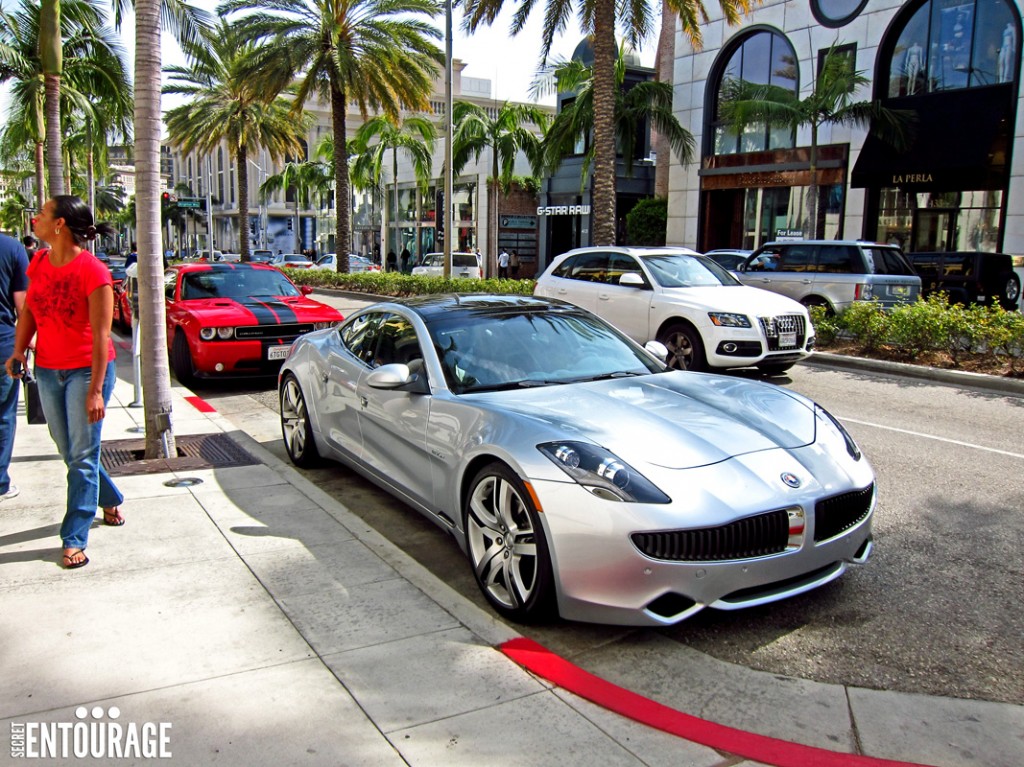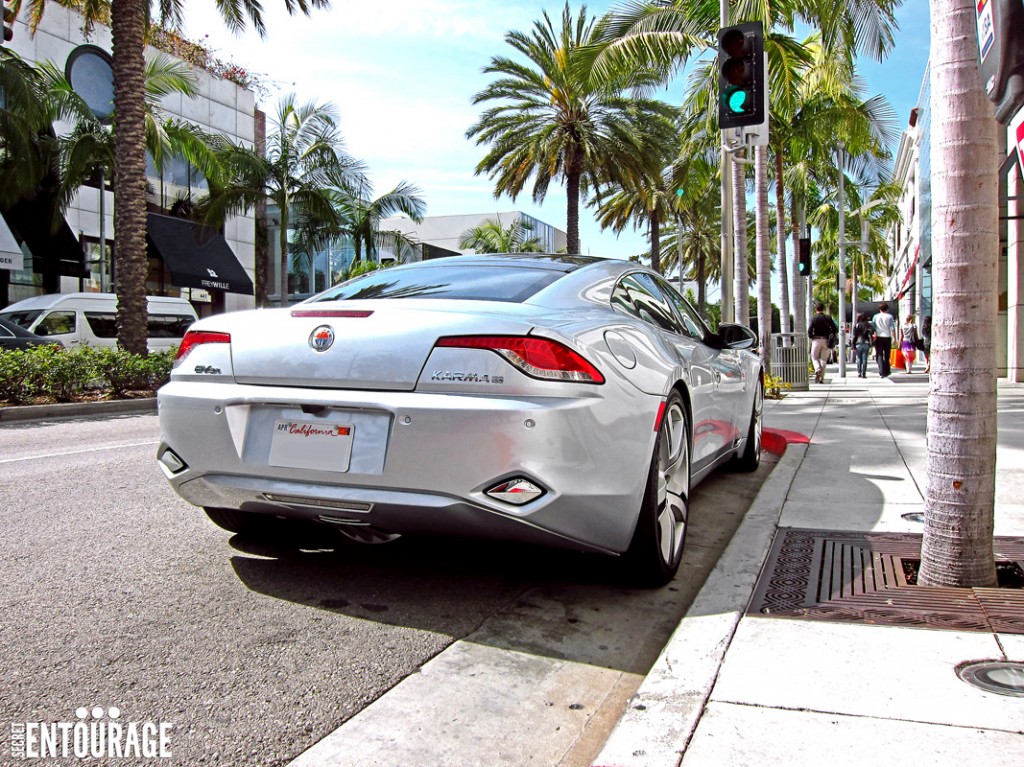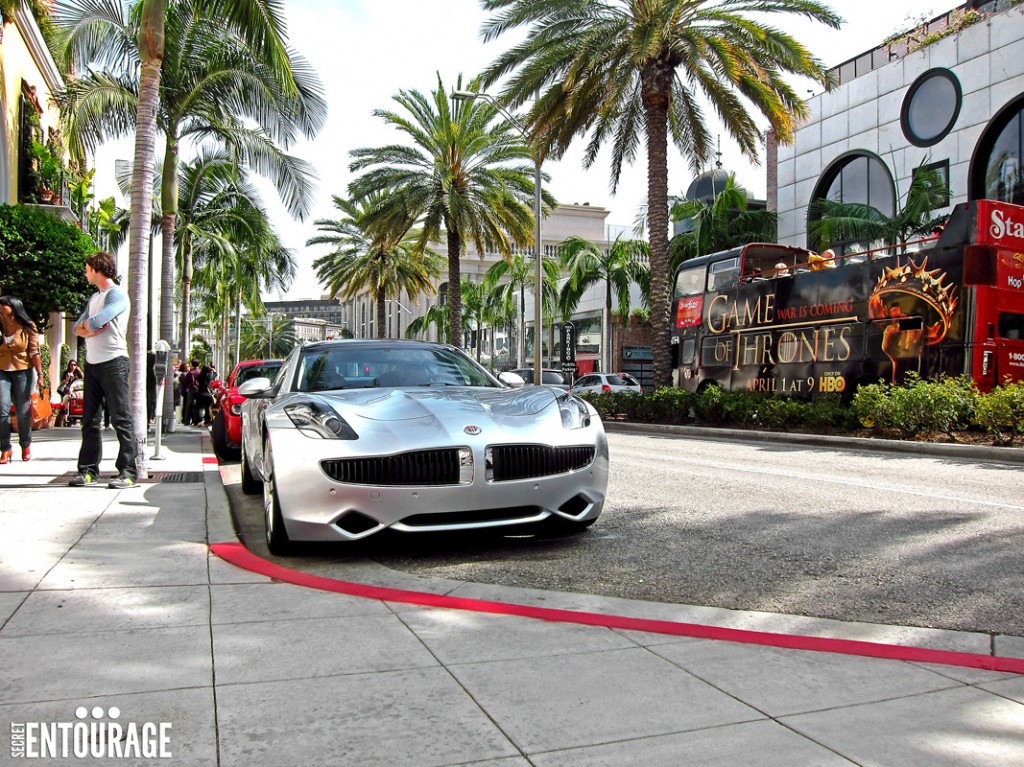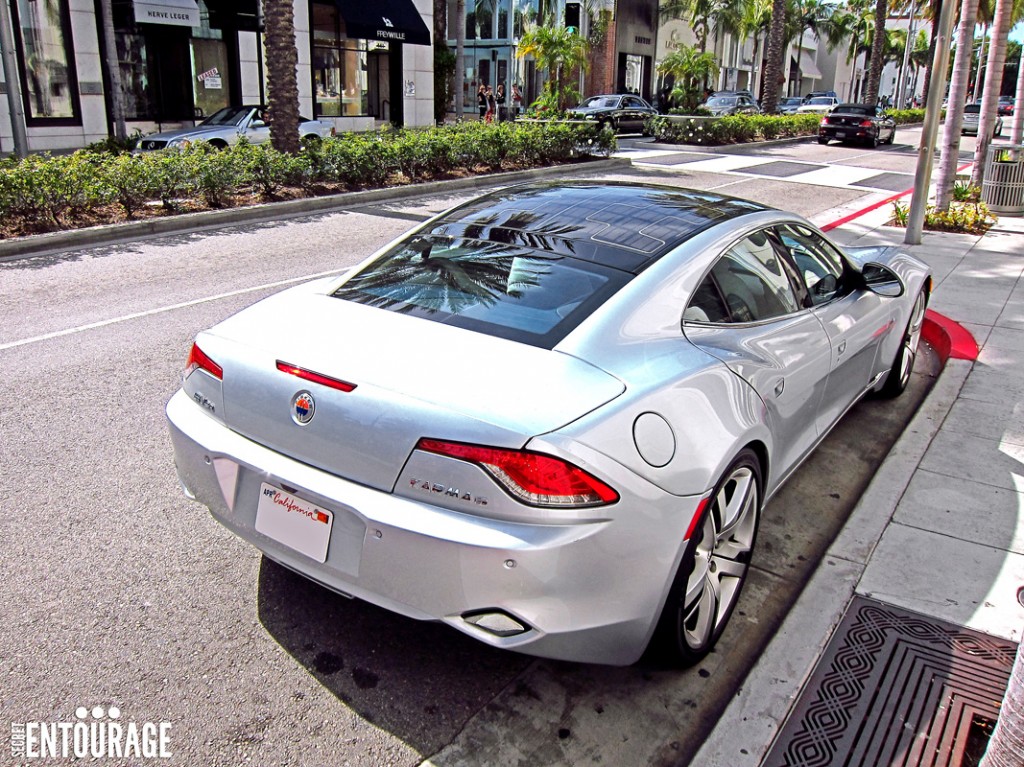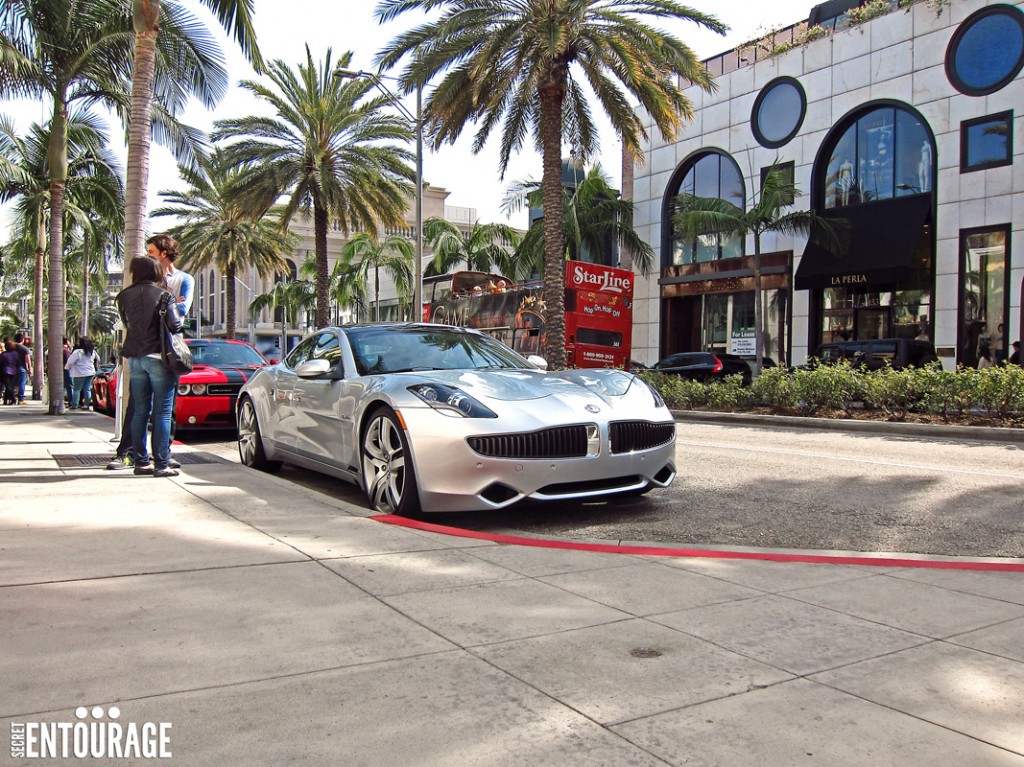Lately, the startup hybrid car manufacturer Fisker has been in the spotlight but for all the wrong reasons. First, it was due to loan constraints from the government which lead to recent Fisker layoffs and then more recently a handful of production vehicle issues came to light which also included Consumer Reports own Fisker Karma to break down within the first 200 miles. We got behind the wheels of the Fisker Karma for a day and we decided to see if all this bad press overshadowed a look into the future of hybrid luxury cars.
Let’s start by taking a look at the numbers:
- $100,000 price tag
- 5300 LB curb weight
- 32 mile range on electric only
- 403 HP / 1000 ft lb torque
- 6.3 sec from 0 to 60
Visually the car is either stunning or awkward depending on your tastes. Keep in mind that the Fisker brand is founded by Henrik Fisker, the designer behind such classics as the Aston Martin Vantage and BMW Z8. While not as beautiful as the Aston Martins he designed, the Fisker Karma is unlike nothing else on the road. It is low, wide, and isn’t as proportional as most luxury sedans. Our favoritate angle has to be a straight on shot from the rear which showcases its rather unique tail light design and low stance while sitting on 285 wide rear tires. The front overhang is very long, especially while behind the wheel. The roof is home to solar panel technology and looks pretty cool and actually does serve a purpose of utilizing the sun’s rays for an additional few miles a day. The arches and curves around the quarter panels and fenders do serve a muscular yet refined look. Combined with the 22″ wheels, no other sedan in motion catches as much attention as the Fisker does. Perhaps it’s because of its unique design, or perhaps people are simply curious, the Fisker Karma demands presence and it can certainly make you a celebrity with all the stares and comments from the general public. Drive this car through Beverly Hills and people will think Leonardo DiCaprio is the owner.
The interior of the Fisker Karma leaves much to be desired, especially at a six figure price tag. The front seats are supportive and comfortable. During the course of our time with the Fisker Karma, not once did we complain about body aches or pains. It is actually a car that would be perfect for long distance driving. The front occupants had much more space than expected even though the Fisker Karma is listed as a ‘subcompact’ due to the cramp interior space. The rear interior space, however, is much more cramped thanks to the center console which runs all the way to the back, dividing the occupants. The Fisker Karma comes with several interior options and the one we drove had an interior that looked like it was assembled from a parts pin. It was a mixture of plastic, chrome, suede, wood, and eco friendly cloth. We can see the appeal but truth be told, a little consistency would have resulted in a cleaner interior. Storage space was practically non existent with no glove box, and a small storage compartment in the center console area. Instead of a few decorative pieces in the interior center console, Fisker should have used that as storage space. The trunk was large enough to fit one golf bag. Go figure. Aside from a few steering wheel controls, the bulk of the command center revolves around a large touch screen display in the center console dash. We’ve heard reports of issues with the screen lagging and to be honest it wasn’t as bad as we thought. To put it in perspective, an iPad is much faster and smoother when navigating through the menus. We do wish there were some real buttons and knobs for performance so that even the simplest of tasks can be done, such as tuning into a radio station rather than constantly pushing a button to get there. There is also some slight glare on the screen when the sun shines on it.
The Fisker Karma feels planted yet a little more sporty than we expected. As this was a test vehicle, the tires were pretty much shot but when you put 5300 lbs on 255/285 tires, this car turned in with direct precision and displayed none of that floaty boat feeling that many other luxury sedans are known for. As mentioned the car is comfortable and absorbs bumps on impact with no drama at all. We took the car to some twisty roads in the mountains and the car handled quite well despite the 5300 lb curb weight. Turn in was direct and responsive enough to not upset the cars balance from constant direction changes. The Fisker Karma comes with several different mode options ranging from ‘stealth’ to ‘sport’ modes. The difference being that ‘stealth’ is all electric and ‘sport’ uses the gas engine as well. For the majority of our test drive, we put it in sport mode to get the most out of the car. The car does move fairly quick as well. With an claimed 6.3 0-60 time, we wouldn’t doubt that. On the highway, a rush of linear torque surges the Fisker Karma past cars with no issue at all. Sure the car could use a bit more power to move 5300 lbs but as it sits, the combined drivetrain technologies worked ok. With our driving characteristics, the average MPG we witnessed was just under 30 MPG. The brakes were fantastic and that is to be expected with Brembo brake technology that wrapped all the corners.
We are glad that the car worked with no issues at all, and that should be how it is considering this is a production vehicle. Unfortunately, a few hundred Fisker Karmas have already been recalled and dozens more are reporting issues. The overall quality and finish of the Fisker seemed like the car was rushed into production to meet government and consumer deadlines. We expected a no squeeks, rattles, or odd noises, however, a few of those occured from different areas of the car. The body panel gaps were larger than most Japanese economy sedans. The transition of using the gas engine was a little rougher than we’d expect. The cars exterior matched the price tag but the cars interior did not at all.
This begs the question on who does this car belong to and where does it stand in the segment? The Fisker Karma competes in some tough company at this price range and segment. Such competitors include the Porsche Panamera Hybrid or the Mercedes S Class Hybrid. Fisker says that this car caters to the demographic that has a collection of cars and would only use the special occasional local outings. We see their perspective but also see it caters to the wealthy individuals who want to make a statement, and not just a green one at that. In all honestly there are other cars in this category that are proven to be cheaper, more environmentally friendly, get better gas mileage, and even have more features. But ultimately, the Fisker Karma is in a class of its own. No other car out there has what this car has and that is sex appeal. Would we get one? Unfortunately, the answer is no. At $100,000, we would take a used Mercedes S65 AMG anyday. But that’s just us! :)
